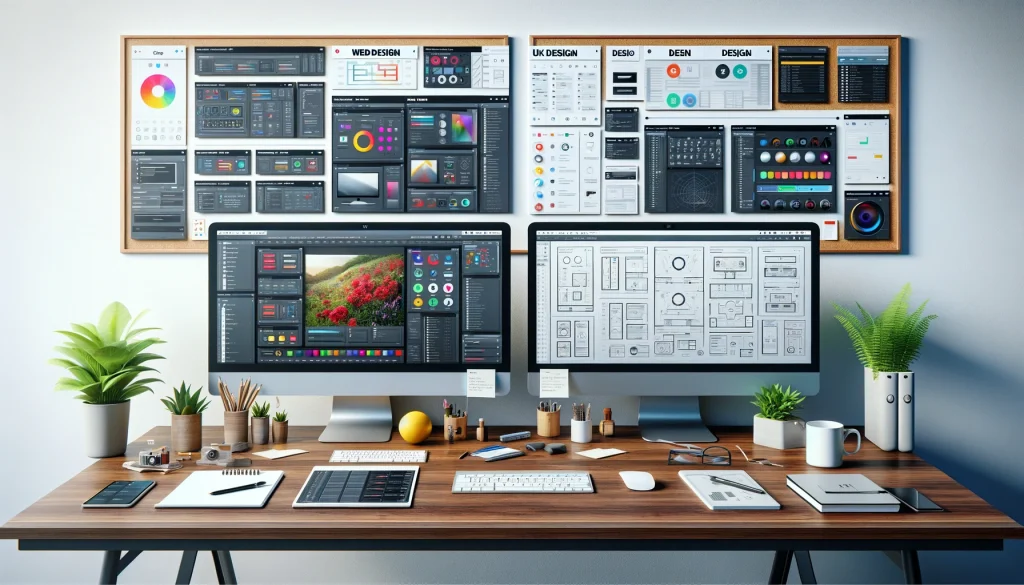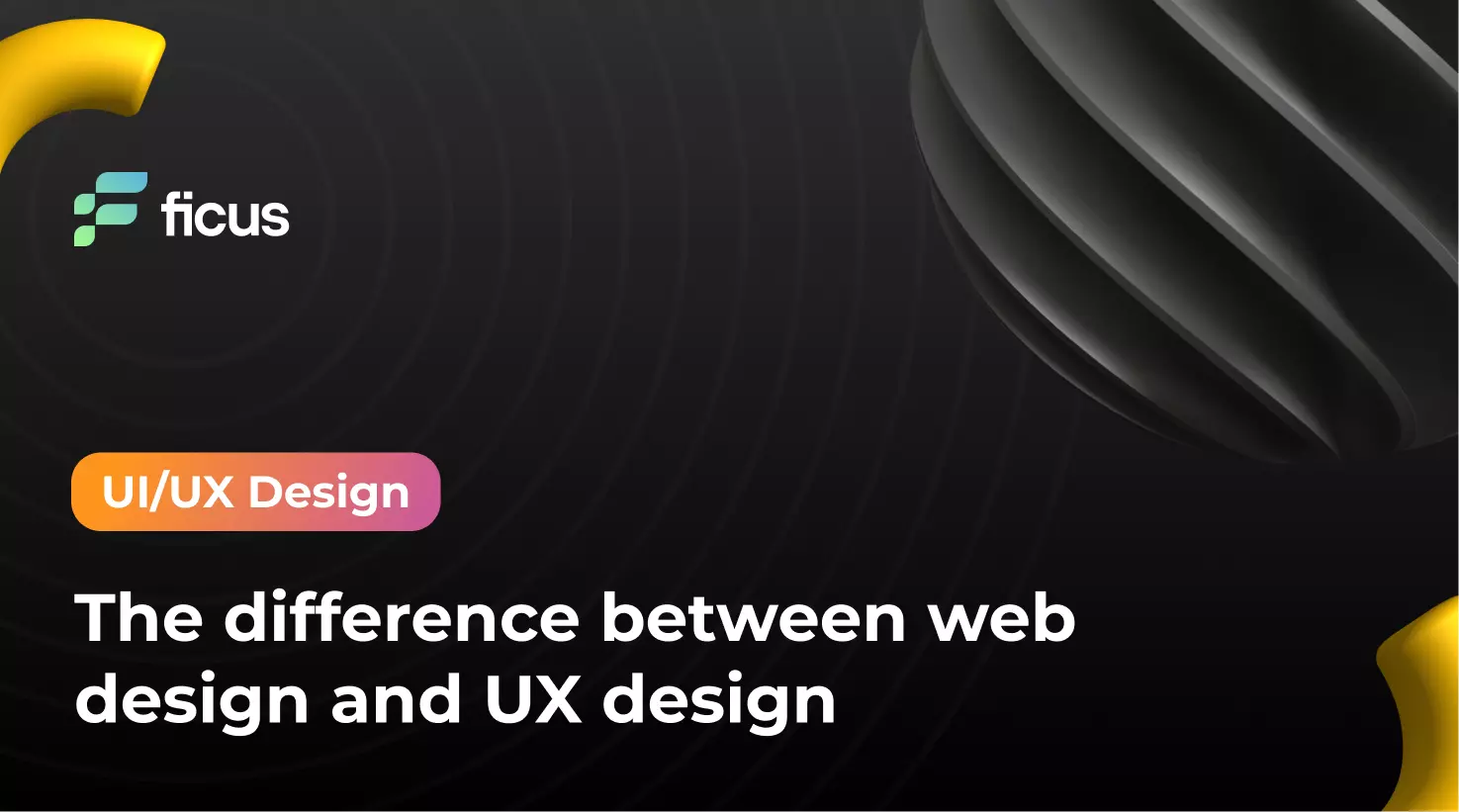Comprehending the distinctions between web design vs. UX design is critical for developing reliable digital products. While web designers concentrate on aesthetics, including layout and visual components, UX developers emphasize user experience, ensuring the internet site is user-friendly and responsive to user requirements. Each role has unique responsibilities; web designers craft the aesthetic identity, and website design UX designer groups improve use and complete satisfaction by assessing user communications and responses. These two disciplines, though different, must work together carefully to ensure that both the aesthetic appeal and performance of sites or apps meet organizational objectives and customer assumptions. Recognizing which team needs to deal with particular facets of a project can streamline development and boost item success.
- Web design prioritizes aesthetic appeal; UX focuses on functionality.
- Both disciplines aim to enhance user satisfaction and accessibility.
- Understanding differences improves collaboration and product outcomes.
What is UX design?
UX design concentrates on making products useful and easy to use. UX designers optimize how people communicate with products, ensuring they are pleasing and easy to use. By conducting customer studies, designers gain insight into customer feelings, the appearance of the user interface, and the ease of use, aiming to boost overall user satisfaction with the product.
What are the responsibilities of a UX designer?
UX design focuses on creating solutions that directly address the end user’s needs, preferences, and behaviors. Here are the main responsibilities of UX designers, which are different from their web design and UX design colleagues, who may also focus on visual elements:
- User research: UX designers conduct thorough research to understand users, target markets, and competitors, gaining actionable insights for design choices.
- Product structure: They organize the information architecture, user flows, and overall navigation to simplify the user’s interaction with the product.
- Personalization and mapping: Creating user personas and empathy maps is crucial for determining the ideal ways to interact with the user aligning user needs with business goals.
- UX documentation: Responsible for writing UX copy that effectively communicates information about user interfaces and preparing comprehensive documentation for the transition to a new design.
- Co-development: Collaborate with product teams and other stakeholders to brainstorm and implement innovative features and solutions.
- Usability testing: Conducting thorough tests to verify the product’s usability to ensure that it effectively meets user expectations.
- Collaboration on interface design: Working with UI designers, UX designers develop wireframes and mockups that meet functional and aesthetic criteria.
- Leadership in design: They lead design thinking processes across the spectrum, including system management, interaction design, and visual identity.
This delineation underscores the expansive role of a website design UX designer in shaping user-centered design solutions.

What is Web design?
Web design includes producing and organizing a website’s format, material, and visuals. Designers function to craft visually appealing and practical sites, utilizing the most up-to-date design trendsand innovations to fulfill individual needs and enhance customer experience. Their objective is to guarantee that each site is user-friendly and visually pleasing.
What are the responsibilities of a Web designer?
Web designers, sometimes called front-end developers, perform specific functions to distinguish them from web developers focusing on back-end coding. Their main tasks are to create the visual presentation and functionality of websites, ensuring a responsive and attractive interface. Here is a short list of their key responsibilities:
- Collaboration: Directly interacting with clients to understand their vision and requirements, providing regular updates and feedback to ensure the project meets the goals.
- Usability testing: Evaluating how user-friendly a website is by researching potential user interactions and conducting tests to improve functionality.
- Graphic design: Creating the visual elements of the website, including layout, color schemes, and images, and ensuring that the graphics are consistent with the brand’s corporate identity.
- Content development: Creating and structuring written content that complements the visual elements of a website.
- Prototyping: Creating initial samples or drafts of websites to present to clients for approval, incorporating feedback into design iterations.
- Technical expertise: Knowledge of the latest trends in web design and UX design, including software updates and accessibility standards, to improve front-end design techniques.
- Customer support: Providing ongoing support and training to clients after the project is complete to ensure the smooth operation and maintenance of the website.
These roles emphasize the importance of a website design UX designer in integrating functionality with aesthetic appeal to create effective and engaging websites.
Our role is to imagine products that don’t exist and guide them to life.
Christopher Stringer
What do web design and UX design have in common?
Despite the distinctions in their strategy and purposes, web design and UX design share essential resemblances contributing to effective product design development. Exactly how do these disciplines join in resolving user problems and enhancing communication? The following paragraphs explore these common grounds in greater detail, offering a clearer understanding of their collective characteristics.
An affinity for problem-solving
Web design and UX design both center on problem-solving to fulfill distinct objectives. Web designers craft solutions after identifying concerns that affect their customers or companies. They work with groups to create and improve a web service, constantly upgrading based on user feedback post-launch. On the other hand, website design UX designers launch their process with substantial individual research studies to recognize and specify user issues efficiently. They use techniques like design thinking to devise solutions that provide straight to individual requirements. Users evaluate this prototype to evaluate its efficiency and adjust it appropriately. Both roles are committed to refining and improving individual experience with iterative design and feedback.
Considering the user journey
Web design and UX design are special in shaping the user experience. Web design vs. UX design: while web designers focus on a website’s visual aspects and overall appearance, UX designers focus on optimizing the user experience through specific features. Both disciplines analyze users’ flow, but their approaches and responsibilities differ depending on the project’s requirements. For web designers, the goal is to ensure that the website is aesthetically pleasing and functional and meets the client’s or employer’s vision. UX designers delve into users’ needs, studying how each design element affects the overall usability and effectiveness of the product. They iteratively test and refine these elements to increase user satisfaction and improve interaction results.
Creativity based on emotional design
Emotional design is essential in web design and UX design, where the goal is to forge connections with individual emotions to enhance experience and interaction. Web design vs. UX design highlights different focal points: web designers use font styles, images, and typography to trigger emotions, influencing choices and actions that enhance conversions and retention. On the other hand, website design UX designers extend beyond visual elements to incorporate user interactions throughout the product experience. They use graphic design principles to develop meaningful visual circulations and strategically place calls to action. Furthermore, they think about how interactivity and precise timing can even improve emotional actions, making certain a deeply appealing and gratifying user experience. These emotional triggers are crafted to satisfy individual expectations and drive purposeful involvement.
Explore the Distinctive Worlds of Web and UX Design!
Contact UsWhat are the differences between web design and UX design?
While both fields are integral to creating engaging digital experiences, web design vs. UX design highlights significant focus, methodology, and deliverables distinctions. What exactly distinguishes these two critical aspects of product development? Below, we’ll examine the key differences delineating their roles and emphasize how their unique contributions shape the final product.
Main focus
Web design vs. UX design showcases different focuses within electronic development. Web developers prioritize creating visually attractive and practically progressed websites. They utilize the current innovations and coding languages and are skilled at fulfilling the needs of contemporary web browsers to produce receptive and vibrant styles.
Conversely, UX designers emphasize understanding and meeting user needs. They gather information and improve functionality through comprehensive research to enhance the user experience. For them, technology is primarily a tool that allows them to provide users with what they need most efficiently. Their main goal is to meet user requirements and provide intuitive and satisfactory interaction rather than focusing on meeting technical criteria alone.
Platform
Web design and UX design are different fields of endeavor, especially as they apply to different platforms. Web design is primarily concerned with creating websites optimized for use in different web browsers, whether accessed from desktop computers or mobile devices. The goal is to ensure these websites work seamlessly across all browser platforms, using modern technology and adhering to the latest standards.
In contrast, UX design goes beyond specific platforms and is an integral part of designing any system that involves human interaction. This applies to mobile applications, video games, desktop software, and physical retail. The versatility of UX design allows it to improve the user experience in all of these environments by focusing on user needs and interaction, regardless of platform.
Strategy
Web design vs. UX design reflects different priorities in the digital production room. Web designers primarily concentrate on sites’ visual aspects and technical efficiency, such as appearances and loading speeds. For example, to address sluggish loading times, a web designer may enhance file sizes and simplify web page content to improve efficiency and decrease data usage.
Conversely, UX designers focus on the user’s interaction with the site, focusing on how these communications influence the general experience. Their method for the same issue of slow-moving loading could entail prioritizing individual retention methods, improving interactivity on key web pages originally, and employing user feedback for continual enhancements. Unlike web design, which may be much less iterative, UX design entails recurring modifications based on user interactions to fine-tune and perfect the product.
How do web design and UX design work together?
When a company starts creating a new product without clearly understanding its target market, UX designers first step in. They create user identities and strategize to tailor the user experience to fulfill awaited demands, making sure the item is user-centric from the beginning.
Web design and UX design converge as the product’s visual and functional plan materializes. Web designers create interactive prototypes or static wireframes, which are fine-tuned through usability testing. This stage allows designers to iterate based on user communications, maximizing performance and individual experience.
Lastly, web designers encapsulate the brand aesthetics, features, and advantages into the website’s design, mindful of its performance across various devices and internet browsers. They prepare the website for launch, ensuring all aesthetic and textual web content aligns with the overarching web design vs. UX design method, adhered to by comprehensive screening and last adjustments.
Final Thoughts
If we compare web design and UX design, it is clear that while both fields contribute to digital product development, their focuses diverge on visual appeal and user experience. Each plays a different role in how effectively a product engages customers and fulfills business goals.
With a deep knowledge of cutting-edge innovations and market trends, Ficus Technologies is ideally suited to bridge the gap between web design and UX design. By integrating aesthetic design with user-centered approaches, Ficus helps companies create engaging and effective digital products that resonate with customers and drive success.
Web and UX design deliver a cohesive digital experience in an organization. Web designers focus on aesthetics, ensuring the site is visually appealing and aligns with brand standards. UX designers concentrate on user interaction, optimizing the site’s functionality and ease of use based on user feedback and usability testing. Together, they collaborate to ensure the website looks attractive and functions smoothly, increasing user satisfaction and engagement. This partnership is crucial for developing beautiful, user-friendly websites and enhancing the organization’s digital presence.u003cbru003e
Web design and UX design significantly impact the user experience, determining a digital product’s visual appeal and functionality. Web design shapes the aesthetics of a website, influencing first impressions through colors, layout, and typography. UX design focuses on user interaction with the site, ensuring its intuitiveness and ease of navigation. This combination determines how users perceive and interact with the site, directly affecting their satisfaction and likelihood of repeat visits. Effective web and UX design increases user engagement, reduces frustration, and promotes positive brand perception, ultimately affecting user behavior and conversion rates.








